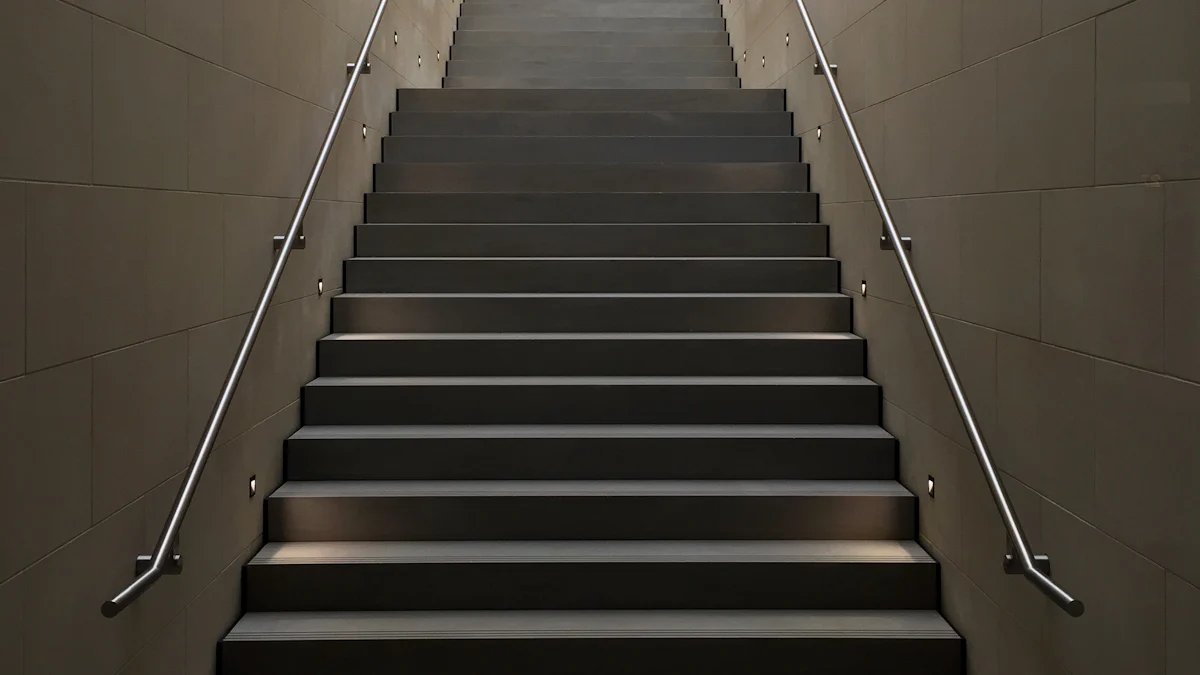.png)

.png)
You might wonder how do you do background removal on Google Slides directly with an image. While Google Slides lacks a dedicated tool to delete the background, it offers basic transparency adjustments. For more precise edits, external tools like Canva or AI-based platforms can help. Background removal plays a crucial role in creating polished presentations. It lets you focus on key elements, eliminate distractions, and maintain a consistent design. Whether you’re working on a Google Slides presentation or exploring other tools, understanding how to do background removal on Google Slides ensures your visuals stand out.
Removing the background from images in your Google Slides presentations can significantly enhance the overall quality of your slides. Knowing when to apply this technique ensures your visuals are both professional and impactful. Let’s explore some key scenarios where background removal can make a difference.
A clean and distraction-free image instantly grabs attention. Removing unnecessary backgrounds improves focus, allowing your audience to concentrate on the main subject. For example, a product image with a plain background looks more polished than one with a cluttered backdrop. This technique also enhances readability by reducing eye strain, making text and visuals easier to interpret.
You can further elevate your slides by customizing visuals to suit your audience. A transparent or uniform background adapts seamlessly to different themes, ensuring your presentation looks cohesive. To achieve the best results, consider these strategies:
By following these steps, you can create visually appealing slides that leave a lasting impression.
Background removal helps isolate the primary subject of an image, making it the focal point of your slide. This clarity ensures your audience understands the key message without distractions. For instance, if you’re presenting data, removing a busy background from a chart or graph can make the information easier to read.
A cleaner layout also improves engagement. When your slides are free of unnecessary elements, viewers can quickly grasp the content. This technique is especially useful in professional and educational settings, where clear communication is essential. By directing attention to the main subject, you ensure your message resonates with your audience.
Consistency is crucial in any presentation. Using images with uniform or transparent backgrounds helps maintain a cohesive design across all slides. This approach reinforces your brand identity and ensures your Google Slides presentations look professional.
For example, a white or transparent background works well with most design themes. It creates a clean and modern look, making your slides visually appealing. Consistent visuals also indicate attention to detail, which can leave a positive impression on your audience. Whether you’re creating a business pitch or an educational slideshow, this technique helps you achieve a polished and unified design.
Incorporating background removal into your workflow enhances the quality of your Google Slides presentations. By focusing on visual appeal, key elements, and consistency, you can create slides that effectively communicate your message.

Adjusting Image Transparency
Google Slides offers a simple way to make a background transparent using its built-in transparency tool. While this method doesn’t let you completely remove the background from a picture, it can help you create a cleaner look. Follow these steps to adjust the transparency of an image:
This method works well when you want to make a background transparent for better integration into your Google Slides presentation.
Limitations of the Transparency Tool
Although the transparency tool is easy to use, it has limitations. It doesn’t allow you to delete the background entirely or remove specific elements. You might notice jagged edges or missed spots, especially with complex images. For more precise edits, you’ll need third-party tools.
Steps to Use remove.bg for Background Removal
If you want to remove the background from a picture entirely, remove.bg is a reliable option. This tool uses AI to detect and remove image backgrounds automatically. Here’s how to use it:
This tool is user-friendly and works well for most images, though it may struggle with intricate details.
Importing Edited Images into Google Slides
After editing your image, adding your image to Google Slides is simple. Open your presentation, click “Insert”, and select “Image”. Upload the edited image from your device. This process ensures your slides feature clean, professional visuals.
How to Remove Backgrounds in Canva
Canva provides another effective way to remove background from picture files. Follow these steps:
Canva’s background removal tool is highly effective, though it’s limited to paid users. It’s a great choice if you’re already using Canva for design work.
Exporting and Using Images in Google Slides
Once you’ve removed the background in Canva, export the image and upload it to your Google Slides presentation. This ensures your slides maintain a polished and cohesive look.
Using these methods, you can effectively remove image background or make a background transparent in your Google Slides presentation. Whether you use built-in tools or third-party options, each method has its strengths and limitations. Choose the one that best suits your needs.
PageOn.ai is an innovative platform that transforms how you create presentations. Unlike traditional tools, it integrates artificial intelligence to assist with content generation, data analysis, and visual design. This comprehensive approach streamlines the storytelling process, making it faster and more efficient. Whether you’re working on a business pitch or a Google Slides presentation, PageOn.ai offers advanced features that elevate your work beyond basic slide creation.
AI-Powered Image Generation
PageOn.ai uses artificial intelligence to simplify the process of creating visuals. It can analyze your content, such as PDFs or text files, and generate slides that highlight the most important points. This feature ensures your presentation captures the essence of your material while saving you time. The AI also enhances your workflow by automating repetitive tasks, allowing you to focus on creativity.
Data Analysis and Visualization
The platform excels at turning complex data into clear, visually appealing charts and graphs. This feature is especially useful for professionals who need to present data-driven insights. By using AI, PageOn.ai ensures your visuals are not only accurate but also engaging. This capability makes it easier for your audience to understand and retain information.
Customizable Templates
PageOn.ai offers a wide range of professional templates tailored to different industries and presentation types. Whether you’re preparing an educational lecture, a marketing proposal, or a business report, you’ll find a template that suits your needs. These templates save time and help you maintain a polished, cohesive design throughout your presentation.
Accessing the PageOn.ai Website
Start by visiting the PageOn.ai website. The platform’s user-friendly interface makes it easy to navigate. You can sign up for an account to access its full range of features.
Inputting Your Ideas and Reference Files
Upload your content, such as text documents, PDFs, or images. The AI will analyze your input and generate slides that align with your objectives. This step eliminates the need for manual formatting and ensures your presentation is well-structured.
Reviewing and Customizing AI-Generated Content
Once the AI generates your slides, you can review and edit them to match your style. Use the drag-and-drop interface to adjust layouts, add text, or incorporate visuals. The platform’s flexibility allows you to create a presentation that reflects your unique vision.
Saving and Sharing Your Presentation
After finalizing your slides, save your work and export it in your preferred format. You can easily integrate the presentation into tools like Google Slides or share it directly with your audience. This seamless process ensures your content is ready for any professional setting.
PageOn.ai stands out as a powerful background remover and presentation tool. Its AI-driven features, including image editing capabilities and customizable templates, make it a versatile choice for anyone looking to enhance their presentations. By using this platform, you can simplify background removal and create visually stunning slides with ease.

Using high-quality images is essential when you remove background from picture files. Professional images not only enhance the visual appeal of your slides but also improve their effectiveness. Here’s why high-quality visuals matter:
When selecting images, prioritize clarity and resolution. Avoid blurry or pixelated visuals, as they can reduce the overall quality of your slides. Always save your edited images in the highest resolution possible to maintain their sharpness.
Sometimes, a single tool may not be enough to remove the background from a picture with intricate details. Combining multiple tools can help you achieve better results. For example, you might use one tool for initial background removal and another for refining edges or smoothing transitions.
Here are some tools you can explore for complex tasks:
By combining these tools, you can tackle even the most intricate backgrounds. For instance, you could start with an AI-based tool for automatic removal and then use Photoshop or GIMP to refine the edges manually. This approach ensures your images look professional and seamless.
Consistency is key to creating a cohesive presentation. When you remove background from picture files, ensure the visuals align with your overall design theme. Here are some best practices to maintain consistency:
Additionally, consider adding subtle shadows or effects to your images. Shadows provide depth and prevent subjects from looking like they’re floating. A realistic drop shadow can anchor the subject visually, enhancing the overall realism of your slides.
By following these tips, you can create a professional and visually appealing presentation. Whether you’re using Google Slides or other tools, these strategies will help you make the most of your background removal efforts.
Adding shadows and effects to your images can make them look more realistic and professional. These enhancements create depth, making your visuals appear three-dimensional. When you use these techniques in your presentations, your slides become more engaging and visually appealing.
Shadows are a simple yet powerful tool. They help anchor an image to the slide, preventing it from looking like it’s floating. To add a shadow in Google Slides, follow these steps:
Experiment with these settings to find the perfect balance. A subtle shadow often works best, as it enhances the image without overwhelming the slide.
Effects like reflections can also improve the realism of your visuals. Reflections mimic the way light interacts with surfaces, adding a polished touch to your images. To apply a reflection in Google Slides, use the “Reflection” option in the “Format options” panel. Adjust the transparency and distance to control how strong or faint the reflection appears.
When using shadows and effects, consistency is key. Apply similar settings across all your slides to maintain a cohesive design. This approach ensures your presentation looks professional and well-thought-out.
Keep in mind that less is often more. Overusing shadows or effects can make your slides look cluttered. Focus on enhancing the image without distracting from your message. If you’ve used background removal on an image, adding a shadow can help integrate it seamlessly into the slide. This technique works especially well for images with transparent backgrounds.
By mastering shadows and effects, you can elevate the quality of your presentations. These small adjustments make a big difference, helping your visuals stand out and leaving a lasting impression on your audience.
You now have a clear understanding of how to remove backgrounds effectively in a Google Slides presentation. From cropping and masking images to using third-party tools like Remove.bg, each method offers unique benefits. Integrating edited visuals into your slides while maintaining consistency ensures a professional look. Experimenting with different tools enhances your ability to isolate subjects, customize aesthetics, and adapt visuals to your audience. For a seamless experience, consider PageOn.ai. Its AI-powered platform simplifies storytelling, generates engaging content, and offers customizable templates tailored to your needs. Elevate your presentations with these techniques and tools.